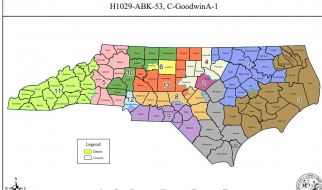Author: Lesley Lanir
Due to his theories on the structure of language, the Swiss linguist, Ferdinand de Saussure (1857?1913) is often known as the founder of modern linguistics.
In order to understand Saussure?s linguistic theories, you have to be able to grasp the basics of his psycho-linguistic terminology and his explanation of the nature of language units.
Understanding the basic concepts of his linguistic theory is not only essential for linguistic students, but for anyone studying semiotics, or the use of various types of signs to communicate. Semiotics is also a basic element in film theory studies.
In Saussure?s Course in General Linguistics, a book summarising his lectures at the University of Geneva from 1906 to 1911, he explained the relationship between speech and the evolution of language, investigating language as a structured system of signs.
It is important to note that Saussure perceived a linguistic unit to be a ?double entity.? The closest way of describing this is that it is composed of two elements. He viewed the linguistic unit as a combination of:
1. A sound-image
2. A concept or meaning
However, from Saussure?s point of view, the concepts of signifier (sound-image) and signified (concept), for example, are not two different entities; they are two different ways to look at and describe language. Signifier and signified are inseparably one. With this theory he was rejecting the Western tradition that treats language like an entity or an instrument. For him language is creative action, not a thing.
The first point to understand is when Saussure mentioned ?linguistic units,? ?sound-images? and ?concepts,? he was referring to the mental processes that create these entities. He was not referring to spoken or written words, but to the mental impressions made on our senses by a certain ?thing.? It is our perception, or how we view this ?thing,? together with the sound system of our language that creates the two-part mental linguistic unit he referred to as a ?sign.?
Let?s take for example the concept of ?Google.? The signifier (?Google?) and the signified (?a search engine on the internet?) are inseparably one. You can?t have one without the other. The sound image, or impression in our minds is of the logo representing Google and through our language system we know how that image sounds mentally. We know the concept or meaning associated with this ?sound impression? is that ?Google? is a large search engine on the Internet. The connections between the two elements are made mentally without uttering or writing the word ?Google,? and the two ?parts? formed are joined and become united as a mental linguistic unit. Saussure calls this dual linguistic unit a ?sign.?
Understanding the Terms Sign, Signifier, and Signified
The part Saussure calls the ?sound-image? (the mental ?linguistic sign? given to the ?thing?) he named the ?signifier? ? this is the sound Google?s logo creates in our minds. The signifier connects ?Google? to the physical world (of sounds).
The part of the sign Saussure calls the ?concept? or ?meaning? (mental impression/association of the ?thing?) he named, ?signified.? The signified connects the meaning ?search engine? to the mental world. The idea of what the signifier ?Google? is, becomes signified.
When someone says ?Google?, it is not purely physical event, nor is it a purely mental event ? it is something else which we call language, or the semiotic world.
As Saussure explains, the connection between all ?signifiers? which are ?sound images? or ?linguistic signs? and what they are signifying ? their signified object or concept ? is arbitrary. In other words, there is not necessarily any logical connection between the two. Again, the word ?Google? exemplifies this well.
There is nothing in the word ?Google? that would suggest that it is a digital means of searching for information on the Internet. It is a random invented word. With the arrival of the Internet, in the waning years of Yahoo! a name, or ?sound image?/?linguistic sign? had to be created to describe a new search engine. However, now, when you see the ?linguistic unit? ?Google? (the ?sign?), you automatically connect it to its sound image, the signifier ?Google? ? a ?linguistic sign? which signifies a ?large search engine on the internet.? To put it another way, the signifier (?Google?) and the signified (?a search engine on the internet?) are inseparably one. You can?t have one without the other. And if we did have one without the other, it would no longer be language.
Resources:
Ferdinand de Saussure. Course in General Linguistics. (1959). The Philosophical Library, New York City.
Adapted from an article first published on Decoded Science: Published Date : November 27, 2012. Edited using comments from William Carrasco.

